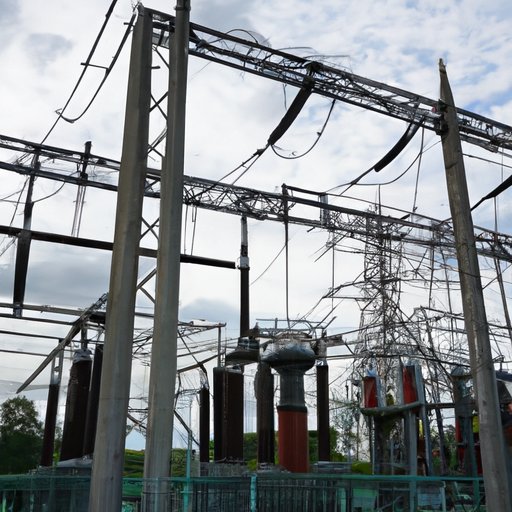Introduction
Electricity is a form of energy that is used to power many of the devices and appliances we use in our everyday lives. It is a mysterious force that can be difficult to understand, but it is important to have a basic understanding of how it works in order to safely use and maintain electrical systems. In this article, we will explore the history of electricity, the scientific perspective, how it is generated and distributed, components of an electrical system, principles of electricity, and safety considerations.
Definition of Electricity
Electricity is a form of energy produced by the movement of electrons through a conductor, such as a wire. It is a versatile source of energy that can be used to power many different types of devices and appliances, from light bulbs to televisions to computers. It is also used to provide power for industrial processes, such as manufacturing and construction.

Overview of the History of Electricity
The history of electricity dates back thousands of years, with the earliest known references to electricity appearing in ancient Greek writings. The first person to formally study electricity was William Gilbert, an English scientist who wrote the book De Magnete in 1600. In the 18th century, Benjamin Franklin conducted experiments on electricity, and in the 19th century, Michael Faraday and James Maxwell developed theories that explained the behavior of electricity. In the 20th century, Albert Einstein developed the theory of relativity, which provided further insight into the nature of electricity.
Scientific Perspective
In order to better understand how electricity works, it is important to have a basic understanding of the physics behind it. At its most basic level, electricity is the flow of electrons through a conductor, such as a wire. Electrons are tiny particles that carry a negative charge, and when they move through a conductor, they create an electric current. This current is what powers electrical devices and appliances.
Types of Electrical Current
There are two main types of electrical current: direct current (DC) and alternating current (AC). Direct current is a unidirectional flow of electrons, while alternating current is a bidirectional flow. Most modern electrical devices and appliances use alternating current, as it is more efficient and can be used to power a wide range of devices.
Generating and Distributing Electricity
Most of the electricity used today is generated at power plants, which use a variety of energy sources, such as coal, natural gas, nuclear, and renewable sources. The electricity from these plants is then transmitted to homes and businesses via transmission lines. These lines are made up of high-voltage wires that carry the electricity over long distances. From there, the electricity is distributed to homes and businesses via a distribution system, which includes transformers and other components that reduce the voltage of the electricity.
Components of an Electrical System
An electrical system consists of three main components: conductors, insulators, and transformers. Conductors allow the flow of electrons, while insulators prevent the flow of electrons. Transformers are used to increase or decrease the voltage of the electricity. All of these components work together to ensure that electricity is delivered safely and efficiently to homes and businesses.
Principles of Electricity
In order to better understand electricity, it is important to understand the three key principles of electricity: voltage, current, and resistance. Voltage is the amount of electrical potential energy between two points, while current is the rate of flow of electrons through a conductor. Resistance is the opposition to the flow of electrons, which determines how much current is allowed to flow through a circuit.
Safety Considerations
It is important to take safety precautions when working with electricity, as it can be dangerous if not handled properly. Electrical hazards include shock, fire, and short circuits. To avoid these hazards, protective devices such as circuit breakers and fuses should be used. Additionally, it is important to follow all safety instructions when working with electrical equipment and to never touch live wires.
Conclusion
Electricity is a powerful and versatile form of energy that is essential to modern life. In this article, we explored how electricity works, from the history and science behind it to the components of an electrical system and safety considerations. Understanding these concepts can help ensure the safe and efficient use of electricity.
(Note: Is this article not meeting your expectations? Do you have knowledge or insights to share? Unlock new opportunities and expand your reach by joining our authors team. Click Registration to join us and share your expertise with our readers.)
